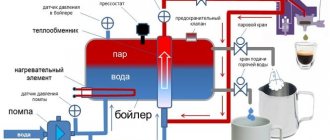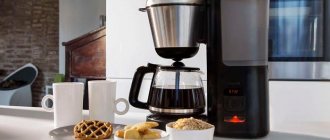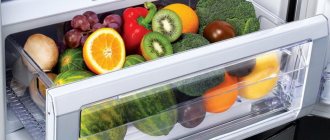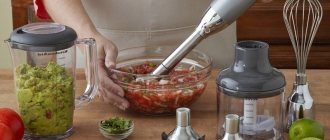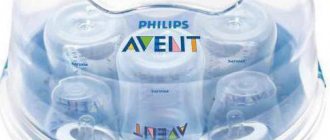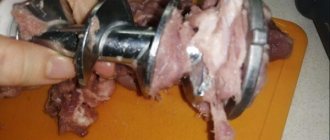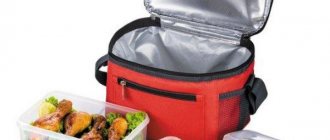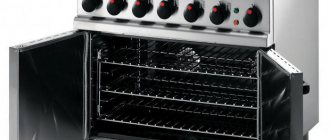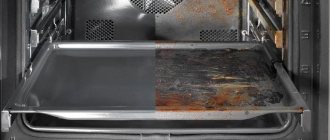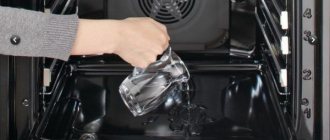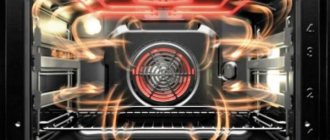The concept of a cappuccino maker
A milk frother is a portable device that creates milk foam.
It is used to make macchiato, cappuccino and latte. In addition, the device allows you to get other types of coffee with added milk.
Purpose
Milk foam was invented by engineers from Italy. They were the first to decide to whip milk into a sweet and airy mass, updating the familiar taste of natural coffee. As a result, the drink became popular all over the world.
Today, in every cafe you can order aromatic lattes, cappuccinos and other types of coffee with milk foam. For their preparation, portable foaming devices are used.
Principle of operation
The operating principle of the cappuccino maker is based on the design of a spray bottle that ensures mixing of steam with milk. There are both automatic and mechanical models. The first ones are distinguished by the presence of adjustment of the gap of the hole through which the dairy product passes. In addition, the device contains a tube that is lowered into the reservoir.
The operating principle of the cappuccino maker is based on mixing steam with milk.
Due to the pressure difference in the spray chambers, the milk is directed into the cappuccino maker and then combined with steam. In mechanical models, the foaming process is carried out in a separate container - a pitcher, and the foam is added to the cup of coffee drink manually.
The steam is generated in a special boiler or other heating element.
It then goes into a cappuccino machine under pressure and mixes with milk, resulting in foam.
How to use a cappuccino maker?
A home cappuccino maker is, of course, not an essential item. But if you like to drink coffee in the morning, especially cappuccino with delicate milk foam, then this is exactly what you need to make your morning coffee ritual even more enjoyable and ensure a good mood for the whole day.
Manual cappuccino maker - what is it?
A manual cappuccino maker is an element of a coffee machine designed to heat and emulsify (whip into foam) milk. It is thanks to this functional detail that we obtain milk foam for preparing classic espresso-based drinks: cappuccino, latte, etc.
How to froth milk using a manual cappuccino maker, what are its main differences from an automatic one and which one is more suitable for home use - you will find the answers to these questions below.
Operating principle of a manual cappuccino maker (panarello)
A cappuccino maker is a special attachment that is attached to the steam wand of a coffee machine. Steam for frothing milk is generated in a separate boiler or using a separate heating element as part of the main boiler (depending on the model of the coffee machine). Pressurized steam is then released into the steam wand.
The container for frothing milk is usually a pitcher - a special jug. It can be steel, porcelain or even plastic. But the most popular among baristas are stainless steel pitchers. Why - read below!
Almost all modern models of carob coffee makers and automatic coffee machines are equipped with a cappuccino maker.
Automatic cappuccino maker
There are also coffee machines with automatic cappuccino makers. Here your role in frothing the milk will be minimal. This type of cappuccino maker has a tube that is lowered into a container with milk, from where it is drawn into the cappuccino maker due to the pressure difference in the chambers of the device. The finished milk foam is served directly into a cup or glass with the future cappuccino or latte.
How to froth milk with a manual cappuccino maker
To prepare fluffy and thick milk foam for cappuccino, you will need a panarello nozzle, cold milk with a fat content of at least 3.2% and a special whipping jug - pitcher. When purchasing a pitcher, give preference to a container made of stainless steel.
- Pour milk into the pitcher (a little more than the volume that you will add to the future drink)
- Turn on steam mode
- Place the milk pitcher under the cappuccino maker nozzle and plunge it into the liquid at a slight angle. Do not immerse too deep, 5-7 mm is the optimal depth
- The milk frother should create a funnel in the milk.
- Adjust the position of the pitcher so that the process of disappearing large bubbles begins. Our goal is smooth foam, similar to melted ice cream.
- Once the milk has increased significantly in volume (approximately 2x for cappuccino and 1.5x for latte), immerse the nozzle deeper to warm the milk
- Do not overheat the milk, otherwise you risk getting a cappuccino or latte with an unpleasant bitter taste.
How to determine the desired milk temperature?
Time to reveal the secret of the stainless steel pitcher. The optimal milk temperature for making latte or cappuccino is 60-70°C. Hotter milk will cause an unpleasant aftertaste, and at 80°C it will already begin to boil. If you don't have a special thermometer that will show the current temperature, you will have to trust your own feelings.
So, the milk has reached the desired temperature when the steel pitcher heats up to such an extent that it is impossible to touch it for more than 2 seconds.
Useful tips from the barista
- If there are a few large bubbles remaining on the surface of the frothed milk, tap the bottom of the jug on the counter several times, rocking the jug in a circular motion.
- Do not fill the pitcher more than half full with milk.
- Once you have prepared the milk foam, immediately pour it into the cup, otherwise the texture of the foam will be destroyed.
- Clean the cappuccino maker after each use, as it is an excellent environment for the growth of lactic bacteria. To do this, simply fill the pitcher with water and start the steam generator, just like when frothing milk.
Which cappuccino maker is better: manual or automatic?
In order to decide which coffee machine model is right for you, answer a few questions regarding your coffee preferences.
- Do you drink more than 3 cups of cappuccino a day?
- Are you choosing a coffee machine for an office or restaurant?
- Are you interested in minimizing the time spent preparing coffee?
- Have you already tried frothing milk with a manual cappuccino maker and did not find a common language with it?
If the answers are positive, the best choice for you will be a coffee machine with an automatic cappuccino maker. Consistent quality of drinks, minimum effort, always delicious latte or cappuccino.
Advantages of a coffee machine with a manual cappuccino maker (panarello):
- Significant savings - coffee machines with a manual cappuccino maker are cheaper.
- Ideal for mastering latte art.
- A coffee machine with a panarello gives more opportunities for coffee experiments and independent creativity.
Milk frothers
In addition, the Kofe.ru online store offers an excellent alternative to both cappuccino makers - separate cappuccino makers or milk frothers. This cappuccino maker is suitable for those coffee lovers who prepare their drink not in an espresso machine, but in a different way, but also love lattes and cappuccinos.
Milk frothers differ in design. The first group is a stationary device that has its own whipping pitcher . Such devices will help you get hot milk, cold milk and hot milk foam. The milk is whipped by a whisk powered by an electric motor.
The second group is devices like a submersible mixer that froth milk directly in a cup. A small spring-ring whisk vibrates and moves, whipping the milk into foam. They are called creamer blenders or simply creamers.
The third group of mechanical foamers are devices that are driven by muscular force.
Electric milk frothers are an ideal choice for those who do not want to master the science of frothing milk themselves, monitor the temperature, and achieve dense, uniform foam. All you have to do is fill the pitcher with the required amount of milk and press the button. After a few seconds, cold or hot milk foam is ready!
Which cappuccino maker would you choose?
Main types and their characteristics
There are several types of milk frothers available on the market. They differ in internal structure and principle of operation. You can choose primitive devices and models with a more complex configuration.
Hand beaters
The manual system consists of a metal or plastic tube with a hole to release steam. After boiling, the liquid from the reservoir is sent to the nozzle. Then the milk is brought to a state of foam, and the intensity of foaming is regulated by a person. This option is not suitable for beginner baristas, but professionals often choose it to create unusual drinks.
Hand beaters are powered by mechanical force or batteries.
Automatic (steam)
The devices allow you to get high-quality foam by pressing the appropriate button, after which the device will independently make coffee with milk without moving the cup.
Automatic models are produced with a discharge hose, similar to semi-automatic machines. They are distinguished by their high cost and ease of use.
Semi-automatic
Semi-automatic products are a lightweight nozzle on a steam wand, to which a flexible hose is attached for immersion in a container of milk. Coffee preparation is carried out in 2 stages. Initially, foam is formed, and then the drink. Depending on the type of final product, the algorithm of actions may differ. In addition, there are semi-automatic machines that prepare coffee and foam in parallel.
Semi-automatic cappuccino makers - a lightweight nozzle on a steam wand.
Mechanical
Such devices froth milk due to mechanical action. Vigorous movements of the whisk can create a foam. In most cases, the equipment does not have a separate reservoir. Milk is poured into a cup, after which foam is made from it.
The popularity of manual models is due to the following advantages:
- Ease of maintenance.
- Ease of obtaining foam.
- Possibility of adding any amount of milk.
Presses
This category includes small metal pitchers similar to a French press. The presence of a double mesh helps to quickly whip up the foam, but requires some skills. Milk can be heated on the stove, provided that the press is made of metal. Hot product is poured into products with a plastic body.
Presses are small metal jugs.
Quick table of contents:
- Introduction
- With pannarello attachment
- Semi-automatic
- Full automata
- Foamers
- Cappuccino from capsules?
Let me warn you right away that the only coffee makers suitable for cappuccino are carob coffee makers with a steam nozzle and rare capsule ones. Drip, geyser and other coffee makers do not make cappuccino. What is the difference between a coffee maker and a coffee machine - read on the main page.
Today I will touch on a burning topic - how to make cappuccino in a coffee machine or coffee maker? Or even more accurately, which coffee machine or coffee maker is best suited for cappuccino, lattes and other coffee-based milk drinks.
This question cannot be answered unequivocally. This topic is multifaceted, I will try to give some information within one article, but I immediately warn you that perhaps something will remain behind the scenes and will be covered additionally. In any case, in one way or another I will talk about all current classes of devices for creating cappuccino at home.
If you are specifically interested in an inexpensive option to guarantee a decent cappuccino “at the touch of a button” - the rating of cheap coffee machines with an automatic cappuccino maker is for you
Photo: Mr.TinDC. Licensed under CC BY-ND 2.0.
In principle, a decent cappuccino can be prepared in almost any coffee machine or coffee maker that has at least a simple steam tube. However, there is some division in the methods of preparation and the labor intensity of the process, depending on the class of devices.
When choosing milk, pay attention to the % fat and protein
But in any case, there are fundamental conditions for a successful result:
- Milk should be the most protein-rich, preferably 3% or more protein.
- The milk should be chilled, ideally 3-5 degrees.
- Milk, after all, must be whole and natural.
- Tools and utensils must be clean.
Without fulfilling these simple conditions, a normal result, as a rule, cannot be achieved. Since milk is the starting point anyway, check out my special article “best milk for cappuccino.”
Now let's move on to the equipment. I'll start, perhaps, with the most budget option.
Cappuccino in a coffee machine with a manual cappuccino maker (pannarello nozzle)
Coffee machines and coffee makers with a manual cappuccino maker have a separate metal tube from which steam comes out under pressure. There are rare specimens that have only a thin tube with one outlet. As of 2021, there are no such models on sale.
The standard option is a pannarello nozzle, available in both plastic and metal. At its thick end there is a large hole, which significantly increases and expands the steam jet; the operating principle is similar to a spray gun. At the same time, there is a very small air suction hole on top. You can froth milk without Panarello, and professionals prefer a steam tap without Panarello, but it will be very difficult for a beginner.
Examples of equipment with a “simple” tube: Philips Saeco HD 8743 coffee machine, Saeco RI8329 coffee maker. Example of machines with panarello : Philips EP1200, Delonghi ECAM 22.110 coffee machines, Delonghi ECP 31.21/33.21 pump carob coffee maker, Scarlett SC-037 boiler coffee maker.
*Attention, discount:
right now Philips 2200 LatteGo is on sale in Eldorado for only 26,991 rubles. For other current special offers on coffee machines, see the “Promotions” page.
*Attention, discount:
right now DeLonghi Magnifica S is on sale in Auchan for only 24,990 rubles. For other current special offers on coffee machines, see the “Promotions” page.
Before starting the process, I strongly recommend releasing the first steam from the steam wand into any container, as it contains a lot of moisture.
There will be literally a few milliliters, but in milk they are superfluous. In addition, this way you clean the steam line. So, how to use a manual cappuccino maker? You pour milk into a separate container (or pitcher, that’s the name of a special stainless steel jug, although no one forbids using anything) halfway maximum, place it under the tube and in a circular motion, better yet, catching the boundary of liquid and foam, move the container, whipping with steam milk.
The panarello nozzle, as a rule, moves; you can tilt it slightly to the side and “blow” steam at an angle to the surface of the milk, creating a circulation, accelerating the funnel - this increases efficiency:
It is important not to boil the milk; what is good about the pitcher is that it is convenient to control the temperature of the milk through it with your hand, simply holding it by the walls. The upper limit is 70 degrees, after which the taste will be distorted. There is no need to lower the panarello to the bottom, this will just lead to overheating of the milk. You can lower the panarello to the bottom only when the volume of foam is already sufficient and the milk has not yet heated to the required temperature.
After finishing whipping, especially if you did it in a pitcher or other large container, it makes sense to hit the bottom on the table a couple of times to remove large parasitic bubbles in the milk mass. Then, using a circular motion of the pitcher, disperse the funnel to evenly distribute the foam in the mass of milk.
Next, use the finished foam and milk as you wish, for cappuccino, latte, latte macchiato, etc.
Coffee machines with automatic cappuccino maker: “semi-automatic milk machines” subtype
An example of this type of coffee machine is Melitta Solo&Perfect Milk
In this version, the device has a special nozzle on the steam supply tube, from which a flexible hose extends, which is lowered directly into a container of milk. It might even be a trivial tetra-pack. You take out a carton of milk, put the hose in there and start the milk flow.
Such systems involve a two-stage preparation of a milk-coffee drink. Coffee is prepared separately, milk with foam is prepared separately. You can choose what to do moving forward. If it’s coffee, then we move the cup with it under the cappuccino maker - the cappuccino is ready.
If you froth the milk first, then move the cup with it under the coffee spout and make espresso - your latte macchiato is ready!
But there is a nuance here. After steam is supplied, the machine needs a little time to cool down. As a rule, the foam will not have time to settle. To speed up cooling, you need to drain some hot water through the cappuccino maker (hot water in such machines is dispensed through the same tube on which the cappuccino maker is attached). Thus, in one thing, you will wash it, which is important - dried milk can clog the cappuccino maker, you still need to wash and disassemble it about once a week, but if you don’t wash it after frothing the milk, you will have to do it more often.
There are more expensive devices with two boilers. This is just necessary so that the switch after supplying steam to making coffee is instantaneous. And devices with two pumps can generally froth milk while brewing coffee, but this does not happen in a home classroom, only in a commercial one.
This type of automatic cappuccino maker is good because it is usually cheaper. The downside is that it is not possible to prepare a drink literally “in one click”; you need at least two + moving the cup.
Just a couple of years ago, semi-automatic cappuccino makers for grain coffee machines were common, and even now in the West there is a noticeable percentage of them on the shelves. In our country, semi-automatic cappuccino makers are gradually being replaced by full automatic machines that make cappuccino “in one click.” I’ll say more, for 2021, perhaps only Jura (and only a couple: D60 and E60) and Melitta have such models in the home class of popular brands. Well, they also occur in commercial settings, of course.
Coffee machines with automatic cappuccino maker: subtype “full milk machines”
An example of models of this type: Delonghi ECAM 350.55 and Siemens EQ.6 Plus.
The more expensive type of automatic cappuccino maker is a full machine - you press a button, and the machine consistently froths milk and brews coffee into one cup without having to move it.
Fully automatic cappuccino makers come with a discharge hose, like the semi-automatic ones above, and with a built-in jug.
The jug can be easily removed and stored directly with the milk in the refrigerator. That is, there will be special milk for coffee drinks. You simply take the jug out of the refrigerator and immediately prepare the dairy treat.
The disadvantage of the jug relative to the outlet hose is that you cannot use any vessel, such as a carton of milk, instead of it. In addition, it is easier to break it purely physically. Well, it’s usually a little more difficult to disassemble.
You need to wash any cappuccino maker after disassembling it, be it in the form of a jug or in the form of a tube. It’s just that in the case of a tube, the whipping module itself is usually located in the dispenser spout; you open it and remove the thing from there, which consists of 2-4 parts. The cappuccino maker-jug can consist of either 5 or 6 spare parts. Another thing is that if the model has the function of “quick cleaning of the cappuccino maker” (I usually call this function that way in reviews), any cappuccino maker with disassembly does not need to be cleaned so often, once a week is enough. And sometimes, if you don’t forget about quick cleaning at all, then once every 2 weeks.
There is a nuance, many machines do not know how to make espresso first and then add milk. Even with a screen and touch buttons. Often, the “Cappuccino” key still starts the preparation of milk first, and only then the coffee. It takes two clicks: prepare espresso, and then press the milk foam button.
Recently, the number of coffee machines that can prepare “proper cappuccino”, that is, first brew espresso and then add frothed milk to it, has been steadily growing. Now all major brands have acquired such equipment; I keep a full list of models here. I believe that “proper cappuccino” and cappuccino when coffee is added to milk are radically different; they are actually different drinks. If you are a fan of classic Italian cappuccino and want to prepare it with “one touch,” then you need to choose from this list of models. For 2021, the most affordable machine with “the right cappuccino at one touch” is the Philips Series 5000 LatteGo (with the LatteGo milk jug)
Grain machines with a fully automatic cappuccino maker are the most popular on the market. Almost any grain machine that costs more than 50 thousand rubles will have just such a cappuccino maker, with the exception of some Jura models, because they are, in principle, the most expensive, and they still have semi-automatic milk machines for this money (see above).
If you are looking for the most budget-friendly options for milk vending machines, then this rating is for you. If you are looking for a middle class, with a cut-off of about 60 thousand, where in addition to the auto-apuchinator there are additional buns, more recipes, special cooking modes, etc., then this is the place for you. Adherents of top things go this way.
By the way, there are even carob coffee makers with a built-in automatic cappuccino maker, for example, Vitek VT-1522. Another thing is that the espresso in them is still prepared manually, so the charm of “one press” is seriously blurred after the need to grind the beans and carefully form a coffee tablet in the horn.
*Attention, discount:
right now Philips 5000 LatteGo is on sale at the official Philips for only 37,990 rubles. For other current special offers on coffee machines, see the “Promotions” page.
*Attention, discount:
right now DeLonghi ECAM 350.75 is on sale at the official Delonghi for only 49,491 rubles. For other current special offers on coffee machines, see the “Promotions” page.
For those who already have a coffee machine, but “without steam”
There are separate devices - milk frothers, independent cappuccino makers, they are also called “aerochinos”, which work on the principle of a mechanical mill.
They provide excellent results, they work silently, but a separate device is at least less convenient, and it’s a sin not to use all the capabilities of the machine, in my opinion. However, they can be a great solution for those who already have a coffee maker or coffee machine, but without milk frothing functionality.
Attention: I wrote a separate article about milk frothers, there are more examples and their differences are discussed in more detail.
Aerochinos come in two types: with a magnetic whisk and with a regular one, which is driven by a mechanical shaft. The first ones, magnetic ones, are definitely better. They have several advantages:
- Work quieter
- It is more convenient to clean, since the bowl inside is cast, without protrusions or gaps, while the drive shaft sticks out in the center from the bottom and interferes with wiping the container.
- More reliable. In the sense that all these cappuccino makers are made in China. And I’ve come across reviews where the drive siphons have a shaft gasket inside the housing.
As examples of magnetic beaters: more expensive, with a better name - Delonghi EMFI (but the previous version, the differences are only in design, but a little cheaper - Delonghi EMF2) or Melitta Cremio, more affordable, but also quite good - CASO Fomini Jet:
Color palette of milk frothers (electro-cappuccinatores) Delonghi EMFI
Let me draw your attention to the fact that recently manufacturers have been replacing magnetic cappuccino makers in their product lines with regular ones. At the same time, the model number even increases, as does the price. For example, the Vitek VT-5001 beater, although it received a “+1” in the article, is actually “younger” than the VT-5000, it is mechanically driven. The VT-5000 is almost impossible to find these days, but if you can find it, it’s a good foam frother.
More examples of mechanically driven electric cappuccino machines: Oursson MF2005, Clatronic MS 3654, VES V-FS24, Gastrorag DK-003
Cappuccino in a capsule coffee machine
Do you find even automatic cappuccino makers too demanding, or do you want a “fully automatic” option for less? If you plan to consume no more than 2-3 cups of coffee per day, take a closer look at capsule coffee makers.
Among them there are affordable machines that prepare milk and coffee drinks from capsules in literally two clicks. Dolce Gusto uses powdered milk, Tassimo uses sterilized concentrate. Both systems for preparing milk drinks use two capsules one after another, respectively, the final price is doubled compared to black coffee. Hand on heart, the final product is, of course, inferior.
But Nespresso systems make dairy treats, like automatic grain coffee machines or using an autonomous beater - an Aerochino. But such equipment costs accordingly.
Examples of capsule models: with a milk jug - Nespresso Lattissima, with an aerocino - Delonghi EN85 RAE/LAE/WAE or premium KitchenAid 5KES0504.
There are also very rare examples - capsule machines with a manual panarello cappuccino maker: the Nespresso Maestria line (Delonghi EN 450). But in the latter cases, I don’t even know how one can justify such a ridiculous price. PS By the way, check out the selection of current promotions and special offers, which I try to update daily. There you can often find full cappuccino machines at a very “delicious” price, with big discounts.
Criteria for choosing cappuccino makers
When choosing a milk frothing device, you need to consider:
- Price. The category of the cheapest models includes hand-held products (mixers). They perform their functions efficiently, but require physical human participation.
- Presence of heating function. If you like hot coffee, you need to buy models with built-in spirals for heating milk.
- Ease of maintenance. In this regard, manual cappuccino makers are superior to other types. Caring for them comes down to rinsing the metal nozzle.
- Availability of additional functions. Modern automatic models are equipped with displays and buttons for changing operating settings.
Rating of the best models
The list of the best cappuccino makers includes models of semi-automatic, automatic and manual types. They have earned positive reviews from owners and have been tested in various tests.
Kitfort KT-710
The device is suitable for frothing milk at home. You can use it to make hot chocolate, cocoa or thick viscous sauces. As standard, there is a massive aluminum bowl for preparing several servings of drinks. By default, there are 3 operating modes:
- Cold foaming.
- Hot foaming.
- Mixing and heating.
Kitfort KT-710 is a device for quickly preparing milk foam.
Kitfort KT-709
The small stationary frother has primitive controls and a minimalist design. Its metal or plastic body is painted white and resembles a small jug with a comfortable handle.
The device comes with 2 attachments:
- For foaming.
- For heating.
The tank volume is 300 ml, but you can fill no more than 150 ml of liquid.
The device is placed on a reliable platform, has a light indication and an automatic shutdown option.
First Austria FA-5293
The compact and inexpensive cappuccino maker of the First Austria FA-5293 series features a convenient plastic case with rubberized inserts for holding in the hand. The durable whisk ensures efficient frothing for all drinks.
First Austria FA-5293 is a compact and inexpensive cappuccino maker.
You can buy the device in burgundy or black body color. The power source uses 2 AA batteries. A power of 250 W is enough to effectively froth milk.
Oursson MF2005/DC
Easy to use and inexpensive, the Oursson MF2005/DC cappuccino maker has a power of 450 W and a reservoir capacity of 200 ml. The foaming process takes no more than 30 seconds, and the presence of a special indicator simplifies operation. The non-stick coating prevents the risk of milk boiling over or burning.
Melitta Cremio
Melitta Cremio can make creamy foam from heated or cold milk in 1 minute. The modern accessory quickly froths the drink, allowing you to get up to 4 servings in 1 cycle of operation.
The model has 2 modes:
- Foaming with heating.
- Foaming cold milk.
Melitta Cremio quickly froths the drink.
Using the color display you can determine the current temperature. An efficient heating element and sealed housing ensure even heating.
Caso Crema Latte & Cacao
The model features a transparent lid that allows you to monitor the milk frothing process. Using the device, you can easily prepare cocoa or hot chocolate. The increased degree of safety is due to the presence of a metal handle, which is protected from heat even under intense loads. The tank volume is 0.25 l.
Galaxy GL0790
This cappuccino maker will help you prepare sweet milk foam, homemade sauce, omelet, etc. The whisk is made of stainless steel, which is the key to its long service life. The device runs on 2 AA batteries, which are purchased separately.
Galaxy GL0790 will help you prepare sweet milk foam.
Caso Fomini Crema
The Caso Fomini Crema foamer can prepare cold and hot foam automatically. Double bottom and non-stick coating reduces the risk of dairy products burning or foreign odors.
By default, there are 3 operating modes:
- Simple heating.
- Whipping cold foam.
- Preparing warm foam.
Clatronic MS 3326
The small mixer from Clatronic comes with a spacious 0.45 liter bowl and has a high power of 600 W. The user can choose between 3 foaming modes. There are buttons with bright blue indication in front. This makes it easier to use the accessory when there is insufficient lighting.
Clatronic MS 3326 – mixer-foamer.
Clatronic MS 3654
The miniature accessory has an insulating coating, so it does not heat up under intense loads. The stainless steel bowl has increased capacity and is protected from corrosive processes.
When the equipment operates, the metal does not emit harmful chemical compounds.
Clatronic BM 3472
The Clatronic BM 3472 bar cappuccino maker has high power and can prepare drinks of any complexity. The user has 2 speeds available to obtain different results. The bowl is made of stainless steel and secured with 2 holders. Rubber feet are installed at the bottom to prevent vibrations when foaming large volumes of milk.
Clatronic BM 3472 has high power.
Philips CA6500/63
The compact frother CA6500/63 allows you to quickly prepare milk foam. The device uses a removable glass with a volume of 120 ml, which is enough to get 2 full servings of glace, cappuccino or latte.
The device starts with 1 key. The light indication helps you monitor the cooking process.
DeLonghi EMFI.BZ
The body of the cappuccino maker is made of stainless steel. Due to the magnetic drive, the foaming process is carried out almost silently. The bowl holds 140 ml of milk. Using the accessory, you can prepare not only cappuccino or latte, but also mulled wine and cocoa.
DeLonghi EMFI.BZ - automatic foamer.
VES H-200
The powerful VES H-200 frother whips milk to a thick foam and has a certified controller. The transparent lid simplifies the cooking process. The package includes nozzles for mixing and foaming.
Hongxin
The accessory weighs only 52 g and runs on 2 AA batteries. The design uses stainless steel and plastic. Control is carried out by 1 button to turn on and off. It is quite convenient to care for the product. To do this, you need to regularly wipe it with a damp cloth.
Hongxin is a milk frother.
Gastrorag
Gastrorag is a stylish and small foam whipper made in a steel body. The volume of the bowl for heating is 240 ml, and for foaming - 120 ml. Device power - 500 W.
WMF Lono 0413170711
WMF Lono 0413170711 has a stainless steel case. A small electronic panel with the ability to change the heating temperature is used for control. The 500 ml bowl allows you to prepare 2 cups of cocoa or milk froth for 4 cappuccinos.
WMF Lono 0413170711 has a stainless steel case.
Excellent Houseware
The model is used for quickly preparing foam to be added to espresso, latte or cappuccino. The plastic body is quite durable, and the metal rod can withstand intense loads. The accessory is suitable for everyday use.
Bialetti Tuttocrema (00AGR394)
The cappuccino maker has a stylish body made of aluminum. This allows you to install it on any stove, with the exception of induction. The bowl can hold up to 166 ml of milk, which corresponds to ⅓ of its volume. The remaining part is reserved for storing foam. The cooking process takes 10-15 seconds. The device is easy to clean using a dishwasher or a damp cloth.
Bialetti Tuttocrema (00AGR394) has a stylish body.
Severin SM 9494
The main bowl has a volume of 200 ml. The power indicator is 450 W. Using a mixer, you can beat and heat milk. There is no noise during operation.
Nespresso Aeroccino 4
Aeroccino 4 is a progressive foamer with user-friendly controls and 3 operating modes. Using the device, you can prepare various drinks with added milk. LED indication on the control panel makes it easy to select the optimal mode.
Nespresso Aeroccino 4 is a frother with easy controls.
Frabosk 178.73
The budget cappuccino maker is made of stainless steel and has a simple design. The process of preparing thick milk foam takes no more than 15 seconds. Particular effectiveness is noted when processing fatty products.
The frother has a volume of 0.3 ml, but only a third is filled with milk.
Gemlux GL-FM-87
The foamer is available in a metal housing made of stainless steel. It is equipped with a blue light that turns on when foaming. Thanks to its small size, the accessory can be placed in any convenient place.
Gemlux GL-FM-87 is available in a metal case.
Caso Crema Latte&Cacao
The Caso Crema Latte&Cacao frother can be used to produce hot and cold foam. The Choco option allows you to make cocoa from crushed chocolate.
Energy En-298
Mixer Energy En-298 belongs to the budget class. It comes in a pink plastic case and is equipped with a stainless steel whisk. The accessory has only 1 speed, but can foam both cold and hot products.
Energy En-298 is a budget mixer.
Melitta Cremio II
The Cremio II milk frother is available in white and black casings. Among the auxiliary options, protection against operation with an open lid stands out. Therefore, to start the system you need to latch the top part.
Nespresso Smart Barista
The accessory is suitable for preparing coffee, milk and other drinks with the addition of foam. The model uses induction heating to heat the milk evenly. The user has 13 programs at his disposal.
Nespresso Smart Barista is suitable for preparing coffee drinks.
Rating of the best manual cappuccino makers
Now we proceed to consider the following list of devices, but only of the manual type. This option is more affordable, since your presence is already required here. Such models are the optimal solution for owners of a classic coffee maker.
Energy En-298
This device will help you make foam for lattes, cappuccinos and other drinks at home. The model is easy to use, thanks to the instructions you can figure out how to use this device. The selected product requires studying reviews in order to highlight the pros and cons of the device.
Advantages:
- Build quality.
- Light weight.
- Easy to use.
As for the downsides, the owners note that you need to get used to working with the device. Since initially the foam of the required thickness may not be obtained.
Hongxin
A few seconds are enough to get thick foam for your drink. This method is easy to use, which means even children can handle it. Affordable cost, easy operation and maintenance - these are the most important things that users note. Stylish design and compact size will fit into any kitchen.
Advantages:
- Price.
- Design.
- Build quality.
No deficiencies were identified during the review analysis process.
Clatronic Clatronic Red MS 3089
The right option in choosing cappuccino makers for those who want to get thick foam, but are not ready to pay a lot of money for the device. Small size, fast milk frothing, use of high-quality materials - these are what the owners of the device note in reviews.
Pros:
- Easy to use.
- Thick foam.
The owners did not find any key deficiencies.
Excellent Houseware
The Excellent Houseware Frother creates a rich foam that will complement any drink. You just need to immerse the device in milk and press the button. A modern manufacturer uses high-quality materials to increase service life. Please note that the device runs on batteries.
Pros:
- Design.
- Price.
- Simple controls.
- Power.
In reviews, users rarely point out any critical shortcomings.
Foamer operating instructions
Using an automatic cappuccino maker is quite simple:
- Loosen the nut on the device, and after fixing the steam tube, tighten it back.
- Place the accessory over a container of liquid and get rid of any remaining water.
- Close the regulator and connect the cappuccino maker with the milk container using a silicone tube.
- Place a cup under the device and turn on the steam. Using a special pin, adjust the degree of film density.
Recommendations for making cappuccino and the secrets of perfect foam
You can get good froth for cappuccino using any frother or coffee machine with a steam function. Regardless of the device, you should follow a few tips:
- Use exclusively chilled dairy products with a fat content of 3.5%.
- Choose quality coffee.
- Before starting cooking, thoroughly rinse the equipment.
Rules for choosing milk
To make cappuccino, you need to use natural, pasteurized or whole milk. It must contain at least 3% protein.
You need to use natural milk.
Foaming milk with a low fat concentration is problematic because the result is a dry consistency. If the whole product is used, the foam becomes creamy and suitable for lattes.
Alternative whipping methods
If you don’t have cappuccino makers or milk frothers at hand, you can use proven alternative methods. They allow you to get high-quality foam in a few seconds and without much effort.
Fork
First you need to heat the milk, and then pour it a third into a wide container with high walls. Tilt it and start whipping with quick rotations of the fork. After 30-40 seconds, the product will acquire the required consistency and will be ready for use.
You can beat the foam with a regular fork.
whisk
The heated milk should be poured into a glass. Next, you should lower the whisk into the container, hold its handle between your palms and beat vigorously for 30 seconds.
Jar
The method involves performing the following actions:
- A third of the jar is filled with cold milk and closed with a lid.
- Shake the container for 30 seconds. The volume of the product will increase 2 times.
- Remove the lid and transfer the jar to the microwave. After 45 seconds of heating, the foam will settle and acquire the required density.
https://youtube.com/watch?v=5pkkfWNHVjY
French press
Using such a device allows you to obtain voluminous and dense foam. The filter ensures uniform distribution of milk with air saturation. The specifics of whipping are as follows:
- Heat the milk and pour it into the French press.
- Move the piston up and down with intense movements for 30-40 seconds.
- Lower the piston to the bottom.
- Rotate the French press to thoroughly mix the foam and milk.
To prevent large bubbles from appearing, lightly tap the bottom of the French press on the table surface.
Types of manual cappuccino makers
Devices are divided depending on the nozzle. Let's find out what we're talking about and look at them in more detail.
Nozzles
There are 2 types of attachments that allow you to froth milk with a cappuccino maker, obtaining its required density:
- Whisk. A small device with an attachment ending in a rotating whisk will froth milk into a soft foam suitable for most types of coffee. Its action is similar to the movements of a regular mixer. Just press the button and the attachment will do all the work. The movements of the whisk introduce air into the milk, which ensures the formation of airy “sweet snow” for coffee.
- Panarello. This type of nozzle works on the principle of a spray: drawing part of the milk into the nozzle → saturation with oxygen → returning to the container. Foam is formed precisely due to oxygen enrichment.
Thanks to different steam supply channels, modern nozzles provide the ability to whip milk foam of various densities.
Foam is an invariable attribute of cappuccino or latte
